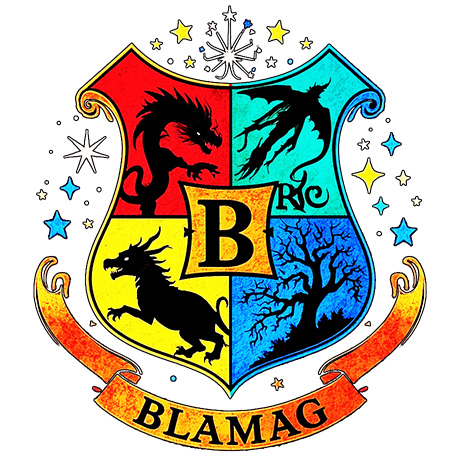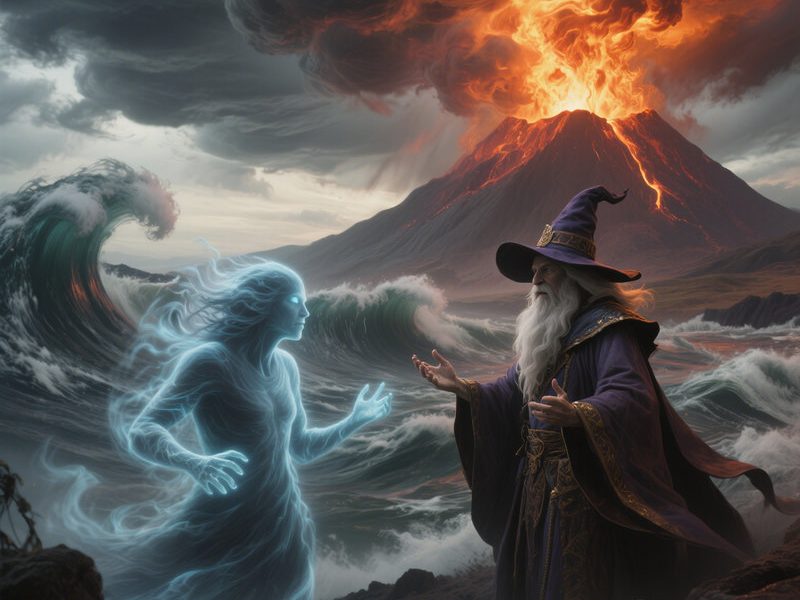I. Theoretical Foundations
1.1 The Triad of Mutualism
The Grand Pact, central to Blamag Magic School’s philosophy, asserts that magic derives from symbiotic agreements between practitioners, elemental forces, and interdimensional entities. Unlike Solomon’s hierarchical command over spirits, Blamag’s doctrine emphasizes reciprocal exchange: the caster provides energy or services, while entities grant their power. This triad—Caster, Entity, and Natural Law—prevents exploitation and ensures cosmic equilibrium. Violators risk Aetheric Debt, where unbalanced energy erodes the caster’s magical capacity.
1.2 The Four Pillars of Pactcraft
- Clarity: Intentions must be verbally and symbolically unambiguous.
- Proportionality: The caster’s offering must match the entity’s contribution.
- Temporality: No pact may exceed seven lunar cycles without renewal.
- Sanctuary: Summoned entities must be shielded from parasitic energies during rituals.
II. Practical Applications & Effects
2.1 Core Applications
- Elemental Mediation: Negotiate with storm spirits to divert hurricanes or coax fire entities to reignite dormant volcanoes (used in Blamag’s climate stabilization projects).
- Cross-Dimensional Communication: Brief dialogues with ancestral guardians or benign astral beings for guidance, though responses are often metaphorical (e.g., riddles, symbolic visions).
- Ward Reinforcement: Pact-bound entities can strengthen protective barriers against curses or invasive magic.
2.2 Limitations
- Entities refuse pacts that threaten their native realms (e.g., water spirits will not aid desertification).
- Overlapping pacts with conflicting entities (e.g., earth and air) cause Resonance Clash, fracturing ritual tools.
III. Key Artifacts
3.1 The Codex of Equilibrium (Grimoire)
- Binding: Cover crafted from Ironwood (enchanted to repel malice), pages made from Starlit Vellum (infused with constellations visible during winter solstices).
- Ink: Oathfire Ink (dragon-scale ash + molten silver) for permanent pacts; Mistquill Ink (evaporates at dawn) for temporary agreements.
- Taboo: Erasing a pact entry before its expiration summons a Void Watcher—a neutral but relentless auditor demanding compensatory energy.
3.2 Pactcraft Implements
- Prism of Accord: A crystal lens focusing intent into visible light patterns, ensuring clarity during negotiations.
- Elemental Altar: A stone slab engraved with tiered sigils, each tier corresponding to an elemental domain (fire, water, earth, air).
- Chime of Severance: A bronze bell rung to peacefully dissolve completed pacts.
IV. Ritual Praxis
4.1 Preparation (3 Days Prior)
- Cleanse the Altar: Scrub with saltwater and sunlight-dried sand. Place fresh laurel leaves at each corner to invite neutrality.
- Attune the Codex: Leave the grimoire open beneath a waterfall or strong wind for 12 hours to align with the desired elemental domain.
4.2 Pact Invocation Protocol
契约召唤仪轨
Step 1: Elemental Alignment
- Place the Prism of Accord atop the Elemental Altar. Chant the target entity’s true name (e.g., “Ignara, Keeper of Emberflow”) thrice while rotating the prism to project a crimson beam (fire alignment).
Step 2: Offerings and Oaths
- Burn a Dragonclove Candle (fire entity) or submerge a Moonjade Stone (water entity) in the altar’s center. Recite the pact terms clearly, e.g., “By this flame, I pledge to restore three acres of scorched land in exchange for thy aid.”
Step 3: Sigil Sealing
- Use Oathfire Ink to transcribe the pact into the Codex. As the ink dries, strike the Chime of Severance once to notify the entity of the pact’s temporality.
Step 4: Pact Completion
- If accepted, the candle’s flame (or submerged stone’s glow) pulses rhythmically. If rejected, the light extinguishes, requiring renegotiation.
V. Historical Precedent
1522 “The Accord of the Wandering Star”
A student forged a pact with a star entity to illuminate Blamag’s library indefinitely but failed to renew it. The entity dimmed after seven months, plunging the library into darkness until compensated with a year’s worth of moonlight trapped in crystal orbs. This led to the Lunar Clause, mandating backup energy reservoirs for celestial pacts.
Conclusion
The Grand Pact transcends mere transactional magic, embodying Blamag’s ethos of respect and equilibrium. As inscribed on the Codex’s first page: “To bind is to be bound—forge wisely, for the cosmos keeps accounts.”
Blamag Pactcraft Advisory
“Do not offer coffee to lava entities. The 1548 ‘Espresso Eruption’ proved caffeine-heightened fire spirits can melt through three floors of reinforced stone.”




